1. Use Cases
1.1. Lack of datacenter space
1.2. Newcos - Quick Start
1.3. Demand Management for standard requests
1.4. Look at ALL use cases before selecting solution
1.4.1. Meet requirements better
2. Starting Points
2.1. Strategy as a starting point
2.2. Experience as a starting point
2.2.1. Pain point centric
2.2.1.1. Training
2.2.1.2. Development
2.2.1.3. Non production environments first
2.2.1.4. Standardized Environments
2.2.1.4.1. Web sites
2.2.1.4.2. Databases
2.2.1.4.3. Sharepoint
2.2.1.4.4. Disaster Recovery
3. Other Cloud Areas
3.1. Finance and Cost Accounting
3.1.1. Determine Cost of service delivery
3.1.2. Quantify Costs andBenefits
3.2. Understanding Costs Helps Meet Objectives
3.2.1. Measure
3.2.2. Move conversation from Cost to Value
3.3. Move to Production and Critical Applications
3.3.1. Pilot Initially
3.3.2. Plan Lifecycle Management
3.3.2.1. Service Levels
3.3.2.2. Change Control
3.3.2.3. Compliance
3.3.2.4. Upgrades/Patches
3.3.2.5. Security
4. Public Cloud Evolving
4.1. Hybrid Cloud Computing
4.1.1. Managing internal and external resources together
4.1.2. Restrict Usage and Costs
4.2. More flexibility in terms and conditions
4.2.1. Negotiate contracts
4.2.1.1. Limit business risk and liability
4.3. Bigger spectrum of offerings
5. Motivators
5.1. Speed & Agility
5.1.1. IT Orgs too slow
5.2. Reducing Cost
5.3. Hybrid Cloud Computing
5.3.1. Meet Peak Demand
5.3.2. Managing services across providers
5.4. Transform IT Orgs
5.4.1. Better business partners
5.4.2. Pro-active
5.4.3. Service-centric
5.4.4. Cloud is an enabler for above
5.4.4.1. Standard Components
5.4.4.2. Faster response
5.4.5. Pricing for services
6. Current needs and challages
6.1. More than technology
6.1.1. Processes
6.1.2. People
6.2. IT Transformation is difficult
6.2.1. Start foray into cloud with just 1 initiative/project
6.2.1.1. Learn from success
6.2.1.2. Move to more areas
6.2.1.3. Long term: Transform entire org by cloud
7. Vendor Questions
7.1. Provisioning
7.1.1. Do use cases require more than virtual provisioning?
7.1.2. Full lifecycle functionality offerred
7.1.2.1. Upgrades
7.1.2.2. Patches
7.1.3. Compliance
7.1.4. Scalibility
7.1.5. Advanced Capabilities
7.1.5.1. Scalibility
7.1.5.2. Real time elasticity
7.1.6. Integration
7.1.6.1. Integration with current service management processes/tool
7.1.7. Heterogenity
7.1.7.1. Multiple Hypervizers
7.1.7.2. Virtual and Physical Environments
8. Pitfalls
8.1. Investment Required
8.1.1. Processes
8.1.2. Roles
8.1.3. Buy capacity in anticipation of demand
8.2. Transparent Pricing
8.2.1. Business needs to understand it is not free
8.2.2. Manages Demand
8.2.3. Built in costing to buy additional resources when need
8.3. New Roles Required
8.3.1. IT Finance
8.3.2. Service Delivery managers
8.3.2.1. More automated delivery
8.3.3. Business Analyst
8.3.3.1. Understand business requirements
8.4. Approach to Transformation and Rollout
8.4.1. Overall transformation
8.4.1.1. Large Project
8.4.1.1.1. Requires investment
8.4.2. Initiative based approach
8.4.2.1. Specific projects to gain experience
8.4.2.1.1. Learn
8.4.2.1.2. Standardize Services
8.4.2.1.3. New costing models
